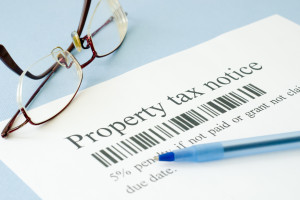Property tax reform would have ‘winners and losers’ in PA

By Andrew Staub | PA Independent
HARRISBURG, Pa. — The debate over property tax reform trudged on Wednesday, as the state Senate continued to vet legislation that would replace the unpopular school funding mechanism with money from the personal income tax and sales tax.
Much of the attention during a public hearing focused on what would and would not be subject to an expanded sales tax, which Senate Bill 76 would increase to 7 percent from the current 6 percent rate.
Property taxes pull in about $12 billion a year. That means replacing them for dollar-for-dollar with other revenue sources would be a heavy lift. Taxpayers are still going to be picking up the tab, but homeowners won’t bear the brunt of school funding alone.
Clothing valued at more than $50 would be taxed, as would food items that aren’t on the WIC list, which includes items the federal government considers essential for good health, such as fresh meats, produce and dairy. More services would also be taxed, meaning movie tickets, dry cleaning bills and investment advice would be more expensive.
Those services — and most clothing — are now exempt from the state sales tax.
TAX SWAP: Some Pennsylvania lawmakers want to make school property tax bills a thing of the past, but make no mistake, taxpayers would pay for education funding in other ways.
State Sen. Mike Folmer, R-Lebanon, one of the bill sponsors, acknowledged lawmakers “cannot make a perfect world” while addressing property tax reform.
“This is a tax shift. There’s no doubt about it,” he said. “And there’s going to be some winners and losers. There’s no doubt about that.”
A higher and expanded sales tax would net just under $6 billion; increasing the state’s personal income tax from 3.07 percent to 4.34 percent would garner just under $5 million, said Jon Hopcraft, the legislative and communications director for bill sponsor, state Sen. David Argall, R-Schuylkill.
Casino revenue used for property tax relief would round out the money needed to eliminate property taxes. Total relief probably wouldn’t come right away, though, as school districts could still charge a reduced property tax to pay off construction debt.
The bill must still make it through the Finance and Appropriations committees before it could go to a floor vote.
While Argall has been confident about the legislation’s chances in the Senate, the state has continued to face sobering financial news. The outlook for April revenue is likely bleak, further complicating not only the issue of property tax reform but Gov. Tom Corbett’s latest budget proposal as a whole.
“It’s no secret that commonwealth revenues are lagging behind projections,” said state Sen. Michael Brubaker, the Lancaster County Republican who chairs the Finance Committee.
So far, sales and use tax revenue are behind by about $111 million, Brubaker said.
It’s that sort of volatile funding stream that has opponents of Senate Bill 76 concerned that the legislation would leave school districts in tenuous budget predicaments.
The Pennsylvania Budget and Policy Center, a left-leaning think tank, has said the legislation has the potential for “vast negative consequences” and cited a report from the state’s Independent Fiscal Office has also found that sticking with property taxes would generate $2.6 billion more than SB 76 by fiscal 2018-19.
Proponents of the legislation have argued that critics simply don’t want to change the status quo, but state Sen. Rob Teplitz, D-Dauphin, said Tuesday the situation should not be portrayed as such.
Some lawmakers would rather focus on more targeted reform that would help groups such as senior citizens on fixed incomes, he said.
Argall has voted for those proposals, he said, and they’ve failed.
“Until we kill the beast and put the stake through its heart so it can never rise again, I don’t think that we can solve the problem,” he said.
Andrew Staub is a reporter for PA Independent and can be reached at Andrew@PAIndependent.com. Follow @PAIndependent on Twitter for more.







